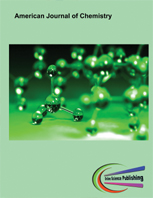Kinetics of Phase Interaction During Secondary Cast Iron Melting
DOI:
https://doi.org/10.20448/812.3.1.11.29Keywords:
Secondary cast iron melting, Kinetics of phase interaction, Mass transfer during melting, Mathematical model of mass transfer.Abstract
The article deals with the kinetics of phase interaction during secondary cast iron melting in cupolas and electric furnaces. The calculation of mass transfer according to the equations of electrochemical kinetics is possible only for individual cases. As the task of secondary melting of cast iron is to achieve a certain composition of cast iron, it is advisable to program complex mass transfer processes in the form of a generalized function, including the transport coefficients and the driving force of mass transfer. It is proposed to introduce the notion of the visible mass transfer coefficient (k^v), which is the density of the mass flow of an element related to one percent of the element's concentration in cast iron. The interaction of phases in devices for secondary cast iron melting is analyzed according to the laws and periods of melting. A mathematical model of mass transfer during secondary cast iron melting has been developed. Studies were conducted using a laboratory gas cupola and a 700 kg/h gas cupola, and quantitative characteristics of mass transfer have been established.

